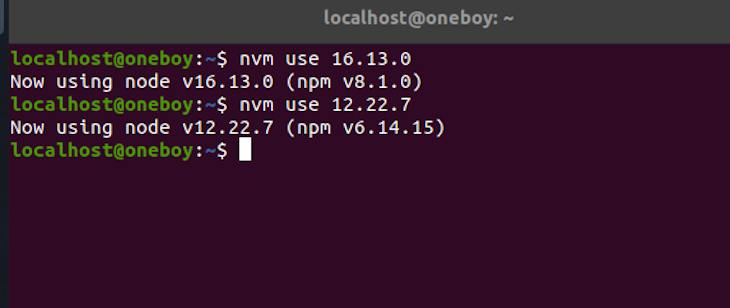

- #Clear old version of node js mac how to#
- #Clear old version of node js mac install#
- #Clear old version of node js mac upgrade#
To upgrade, either use Microsoft’s upgrade tool, download a new version of Node, or follow the Windows upgrade instructions in the Installing/upgrading npm post.įor most users, the upgrade tool will be the best bet.

Many improvements for Windows users have been made in npm 3 – you will have a better experience if you run a recent version of npm. This is what it says on the project’s home page:
#Clear old version of node js mac install#
If you realize you have an older version, you can update as follows.įor Linux and Mac users, use the following command: npm install -g Windows users, the process might be slightly more complicated. You can check the latest available npm version on this page. Npm, which originally stood for Node Package Manager, is a separate project from Node.js. The Node.js installation worked, so we can now focus our attention on npm, which was included in the install: $ which npm Press ^C to abort current expression, ^D to exit the repl save Save all evaluated commands in this REPL session to a file load Load JS from a file into the REPL session

break Sometimes you get stuck, this gets you out To verify that your installation was successful, let’s give Node’s REPL a try: $ node Let’s see where node was installed and check the version: $ which node This negates the permissions issue raised in the next section. Tip: You might also consider installing Node using a version manager. At the time of writing, this is the current Long Term Support (LTS) version of Node. For Linux, you can also install Node via the package manager, as outlined here.įor this tutorial, we’re going to use v12.15.0. There are Windows and Mac installers available, as well as pre-compiled Linux binaries and source code. Head to the Node.js download page and grab the version you need. If you’re more of a video person, why not sign up for SitePoint Premium and watch our free screencast: What is npm and How Can I Use It?īut before we can start using npm, we first have to install Node.js on our system.
#Clear old version of node js mac how to#
We’ll also show you how to work with package.json to manage a project’s dependencies. We’ll show you how to install packages in local and global mode, as well as delete, update and install a certain version of a package. In this guide, we’re going to look at the basics of working with npm. It installs the packages you want to use and provides a useful interface to work with them. This is where npm, the Node package manager, comes in. To make use of these tools (or packages) in Node.js, we need to be able to install and manage them in a useful way. Since then, a whole new ecosystem of Node-based tools (such as Grunt, Gulp and webpack) has evolved to transform the face of front-end development. Originally, it was intended as a server environment for applications, but developers started using it to create tools to aid them in local task automation. It’s built on the V8 JavaScript runtime and written in C++ - so it’s fast. Node.js makes it possible to write applications in JavaScript on the server. This step-by-step guide will show you how to install npm, and master common commands in the Node Package Manager (npm) command-line interface.


 0 kommentar(er)
0 kommentar(er)
